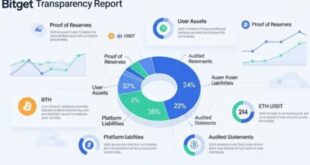In a world where cyberattacks are becoming more sophisticated and frequent, businesses can no longer rely on traditional security approaches to safeguard their digital assets. The concept of a secure perimeter has been shattered by the rise of hybrid cloud environments, remote workforces, and the proliferation of Internet of Things (IoT) devices. To meet these challenges, organizations are increasingly turning to Cybersecurity Mesh Architecture (CSMA)-a revolutionary strategy that is fundamentally transforming how protection strategies are deployed across modern, distributed networks.
The State of Cybersecurity Today
The statistics on cybersecurity breaches are staggering. Data breaches in 2023 surged by 72% compared to 2021, which had previously set the record for the highest number of incidents. A recent study by IBM revealed that the average time to identify and contain a data breach was 277 days—an eternity in the fast-moving world of cybercrime. Compounding this, Gartner predicts that by 2025, cybercriminals will be able to weaponize operational technology environments to harm or kill humans.
In response to these growing threats, CSMA is emerging as a key solution, with Gartner forecasting that by the end of 2024, organizations adopting a cybersecurity mesh architecture will reduce the financial impact of individual security incidents by an average of 90%.
The Core Benefits of Cybersecurity Mesh
Decentralized Security for a Decentralized World- Traditional security frameworks were built on the idea of a well-defined network perimeter. However, as businesses adopt hybrid models and embrace the cloud, these rigid security structures are no longer fit for purpose. CSMA offers a decentralized approach, ensuring security policies follow users, devices, and applications regardless of their location. According to a Gartner report, by 2025, 60% of organizations will use cybersecurity mesh as part of their security strategy.
Improved Threat Detection and Faster Response Times- A key benefit of CSMA is the integration of various security tools into a unified framework, which allows for improved threat detection and faster response times. A recent Varonis study showed that organizations using integrated security solutions reduced breach response times by 29% compared to those relying on traditional approaches. With mesh architecture, data from multiple touchpoints is aggregated, providing security teams with a holistic view of potential threats and reducing response times from days to minutes.
Cost-Effective and Scalable- As businesses scale, their security strategies must grow with them. Traditional security solutions often require significant investment in on-premises infrastructure, which can be costly and difficult to scale. CSMA, on the other hand, leverages cloud-based security solutions, allowing for scalable, flexible protection that evolves as the business does. In a recent Accenture study, organizations adopting cybersecurity mesh reported a 35% reduction in total cybersecurity spending compared to those maintaining traditional security architectures.
Enhancing Security with Zero Trust and AI
A critical component of CSMA is its compatibility with Zero Trust Architecture (ZTA), a model that assumes no entity—inside or outside the network—can be trusted until it is verified. CSMA extends Zero Trust principles by ensuring that security follows the user, no matter where they are. According to Forrester Research, 83% of companies adopting Zero Trust report better security posture, reducing the likelihood of internal or external breaches.
Moreover, AI-driven security is becoming increasingly integrated into mesh frameworks. AI models can analyze vast amounts of security data to detect anomalies and predict potential attacks before they occur. A Capgemini report noted that 69% of companies implementing AI-enhanced cybersecurity solutions saw a significant reduction in false positives, leading to faster threat identification and resolution.
Securing the Hybrid Cloud and Remote Work
With more employees working from home and accessing critical business systems via unsecured networks, the need for a robust, scalable security solution has never been greater. A Flexera report found that 92% of enterprises now have a multi-cloud strategy, and the need for consistent, reliable security across these environments is paramount. Cybersecurity mesh offers consistent security across hybrid cloud environments, ensuring that whether employees are working from corporate headquarters, a coffee shop, or their living room, their access to company resources remains secure.
The Future of Cyber Defense
The rise of Cybersecurity Mesh Architecture represents a paradigm shift in the way organizations think about and implement cybersecurity. By decentralizing security, integrating advanced technologies such as AI and Zero Trust, and providing scalable, cost-effective solutions, CSMA is poised to be the future of digital defense.
As cyber threats continue to evolve, organizations must adopt more agile, adaptive security strategies. Gartner estimates that by 2025, CSMA will become a core security strategy for at least 40% of global organizations, marking a significant shift from traditional methods.
For businesses looking to stay ahead of the curve, investing in cybersecurity mesh today will not only help prevent costly breaches but also position them for a more secure, resilient digital future
BY: Rajesh Thadhani
Vice President – Services & Digital Transformation
Crayon Software Experts India
 Newspatrolling.com News cum Content Syndication Portal Online
Newspatrolling.com News cum Content Syndication Portal Online







